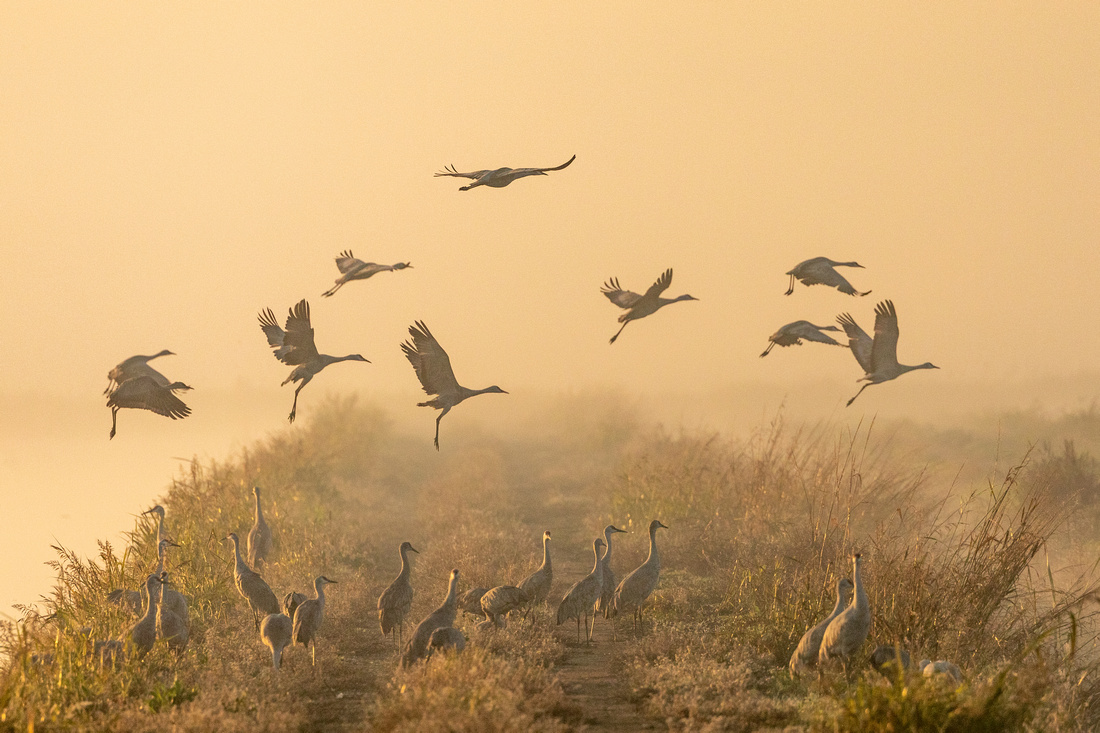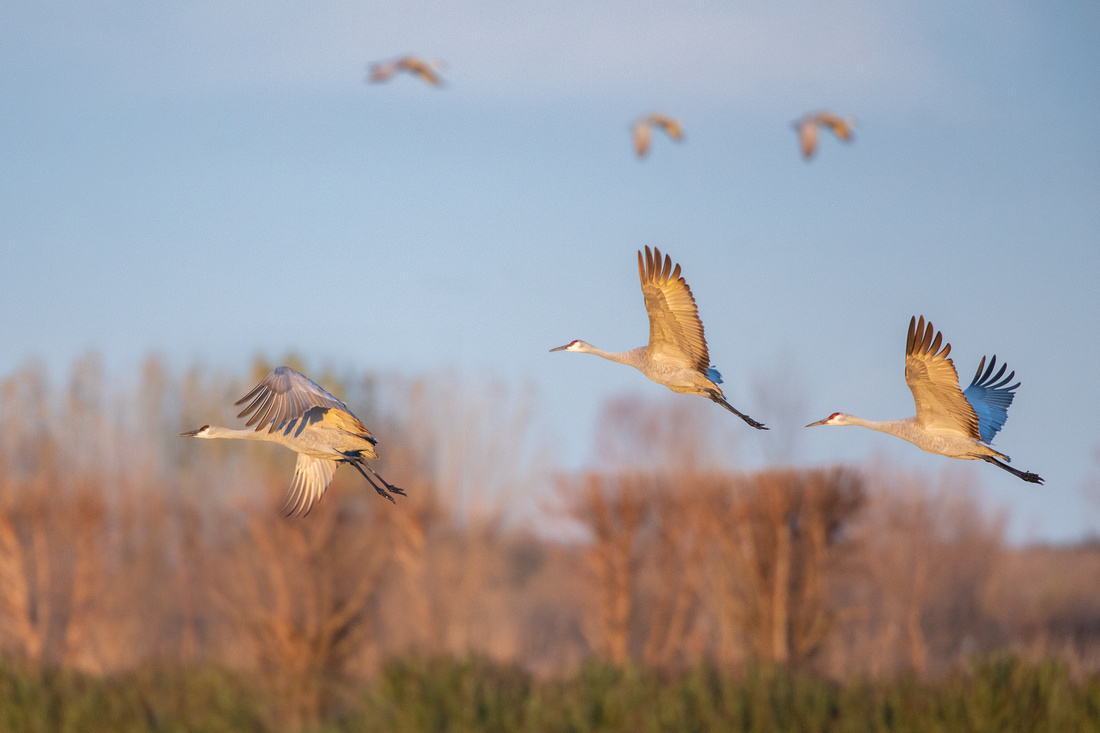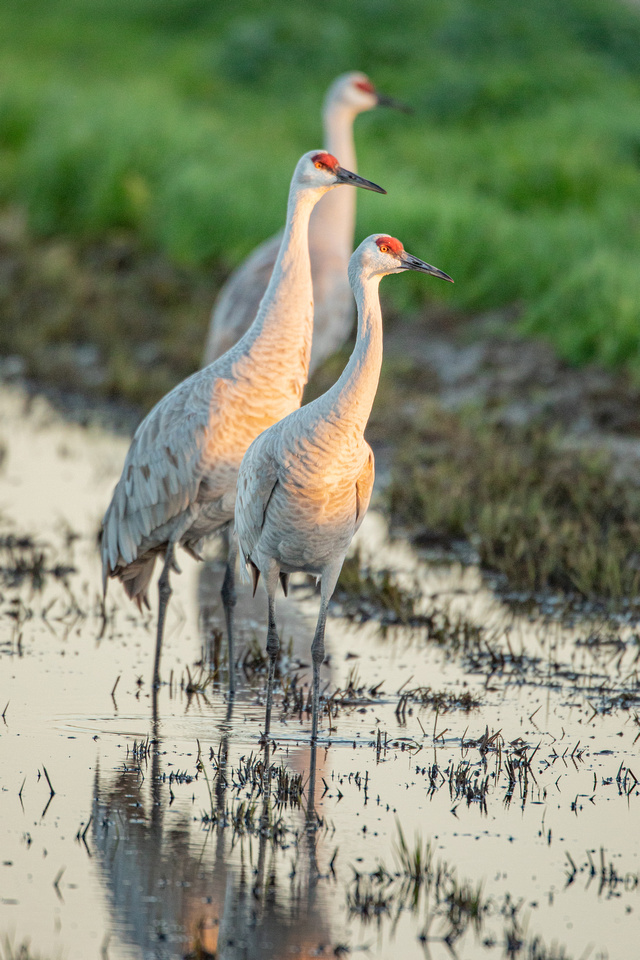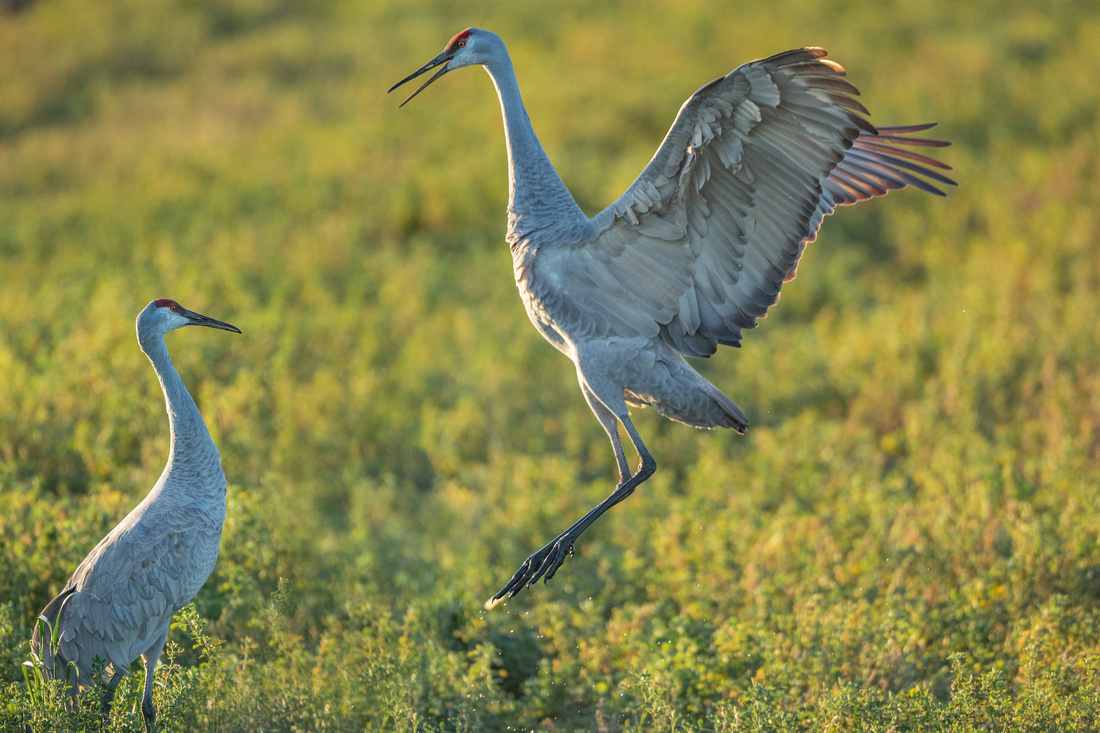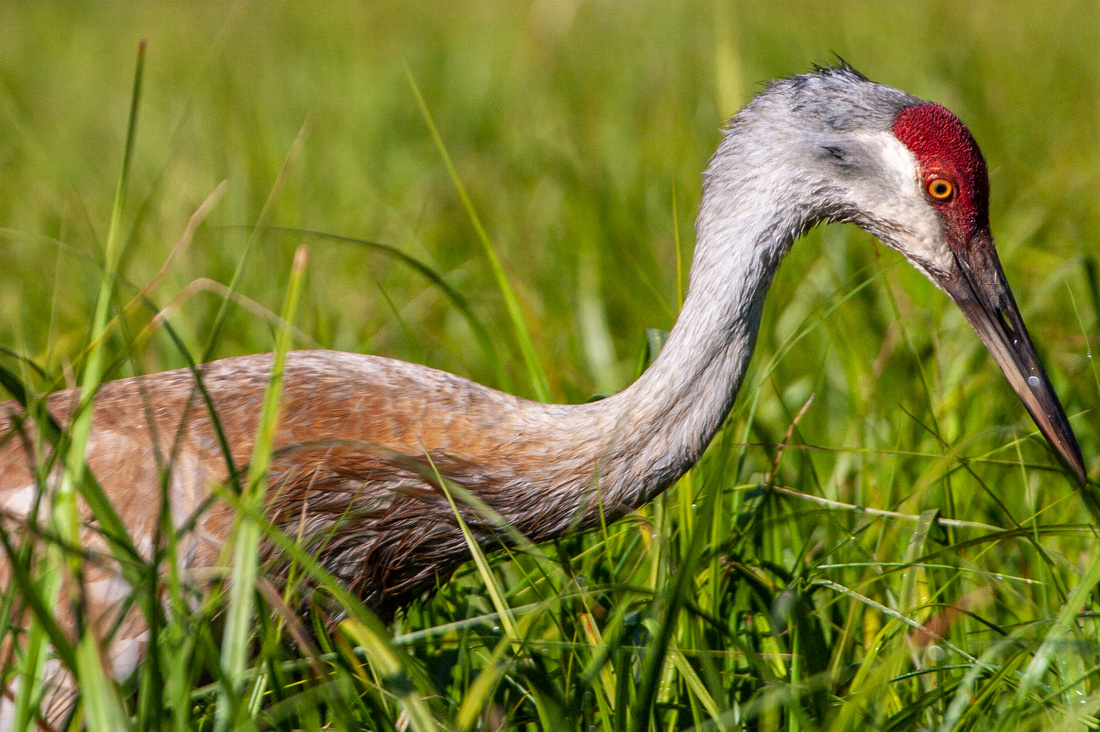Species highlight: Sandhill Crane
Species Highlight: Sandhill Crane
Text and photos by Heather Cline
Introduction
Every fall, I visit national wildlife refuges and preserves in Northern California in search of one of my favorite birds: the Sandhill Crane. I am drawn to these birds because of their size, coloration, and their unique vocalizations, which can be heard up to 2 ½ miles away. I remember sitting in my backyard one afternoon and hearing their call. I looked up and could barely see the flock of cranes flying high overhead, but I could hear them loud and clear – like they were telling me to get my camera and head to the nearest viewing area.
Overview
Cranes are among the oldest living birds on the planet with the earliest Sandhill Crane fossil estimated to be 2.5 million years old, and they have an impressive lifespan of 20 to 40 years.
Size
- Height: 3 to 4 feet
- Weight: 6 to 12 pounds
- Wingspan: 6 to 7 feet
Flight Speed & Distance
- Speed: 25 - 35 mph
- Distance: 200 - 300 miles in a day but can reach 500 miles with a good tail wind.
Cranes are opportunistic fliers, relying on thermals and tail winds to carry them along.
Diet
Cranes are omnivorous and their diet varies depending on the season and where they are at. They use their long bills to glean and dig for a wide variety of plants, grains, small vertebrates such as mice and snakes, and invertebrates such as insects or worms.
The cranes that visit the Platte River valley feed primarily on waste grain left in corn fields, making up 90% of their diet while the other 10% comes from plant and animal foods found in wet meadows adjacent to the river. Seeds, fleshy tubers of plants, grubs, earth worms, snails, amphibians, small reptiles and small rodents are all fair game.
Social and Breeding Behaviors
Courtship includes elaborate "dance," with birds spreading wings, leaping in air while calling.
Sandhill Cranes mate for life, pairing up as they migrate to breeding grounds in the spring. In a display known as "unison calling," mated pairs throw back their heads and point their beaks skyward, emitting a complex series of coordinated, rattling "kar-r-r-r- o-o-o" sounds. The Sandhill Crane female initiates the display.
For migratory populations, nesting begins early April to late May. Non-migratory populations begin in December to early March. Nests are usually low mounds of vegetation located in wetlands but are occasionally located in uplands. The female typically lays two eggs, with incubation lasting 29 - 32 days. The male takes the primary role in defending the nest.
Chicks emerge covered in down, with eyes open and able to walk and even swim within eight hours of hatching. In the fall, juvenile Sandhill Cranes migrate south with their parents, remaining together for up to a year after hatching. The young birds reach sexual maturity in two years, although some may reach the age of seven before breeding.
Adult coloration is gray with a red crown while the juveniles are browner overall with a feathered crown.
During migration and winter, crane family units congregate with other families and nonbreeding birds, forming huge flocks that can number in the tens of thousands.
Predators and Threats
Habitat loss due to development and water diversion is the chief threat to Sandhill Cranes, especially in important staging and wintering areas such as Nebraska's Platte River. Collisions with wind turbines and communications towers also pose threats.
Range
The Sandhill Crane is the most abundant of the world's cranes, widely distributed throughout North America, with the Platte River Valley in Nebraska being a key staging area before they migrate north each spring. Scientists estimate that approximately 80 percent of all migratory Sandhill Cranes in North America use a 75-mile stretch of Nebraska's Platte River during spring migration; more than a half-million cranes “stage” in this area, preparing to continue the long journey north to breeding grounds in Canada and Alaska.
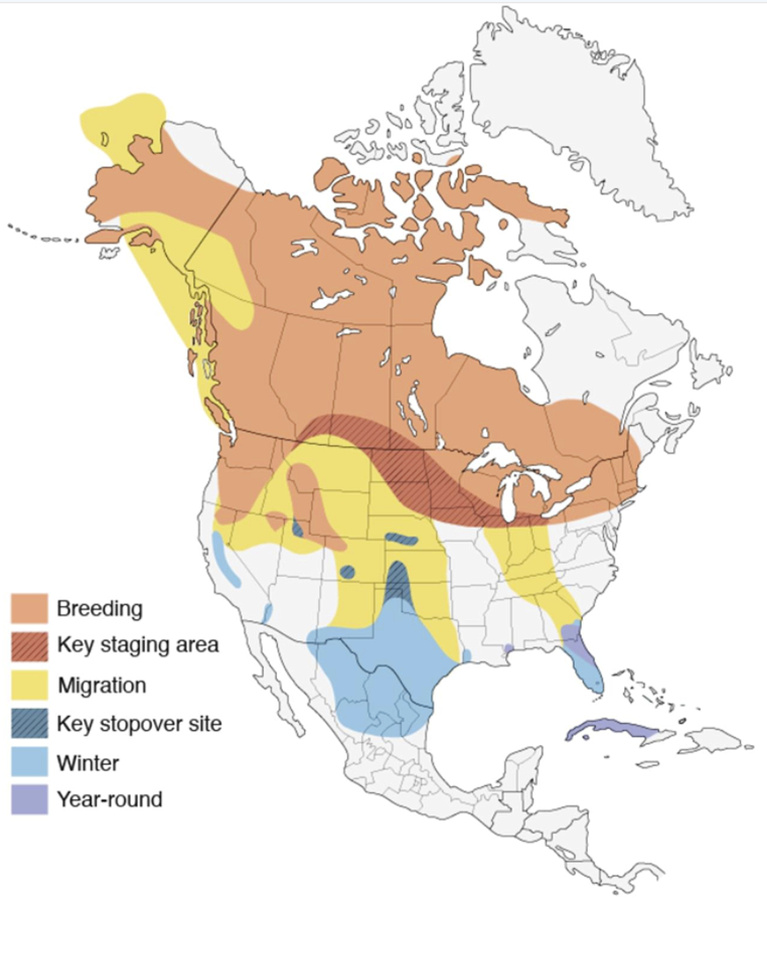 Map pulled from "All About Birds" website
Map pulled from "All About Birds" website
Map from All About Birds
Migration
Migration between wintering grounds in the south and breeding grounds in the north has likely taken Sandhill Cranes across what is now Nebraska for many thousands, if not millions, of years. Thus, the link between Sandhill Cranes and the Platte River is believed to date to the river’s origins some 10,000 to 12,000 years ago, following the end of the last ice age.
During migration, they may fly as many as 400 miles in one day.
Populations nesting in Mississippi, Florida, and Cuba do not migrate.
I hope you enjoyed this focus on the beautiful Sandhill Crane and have an opportunity to view them on your next adventure.


